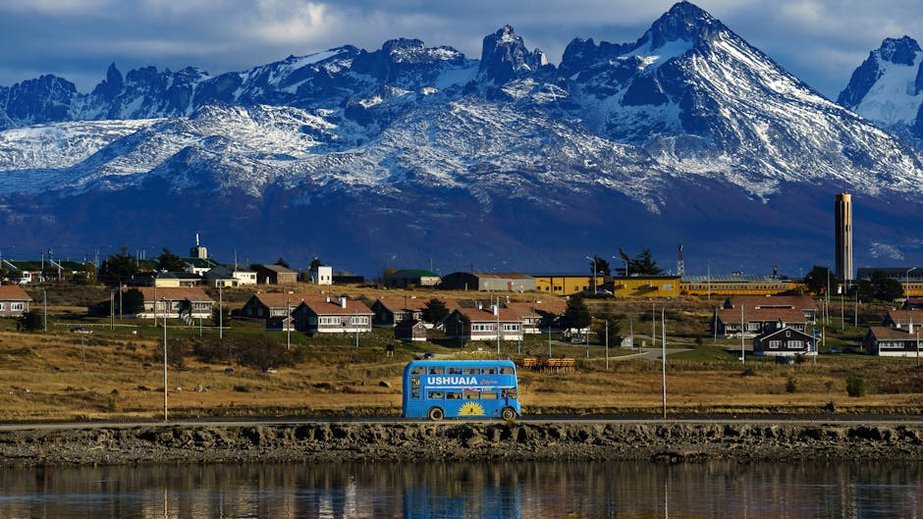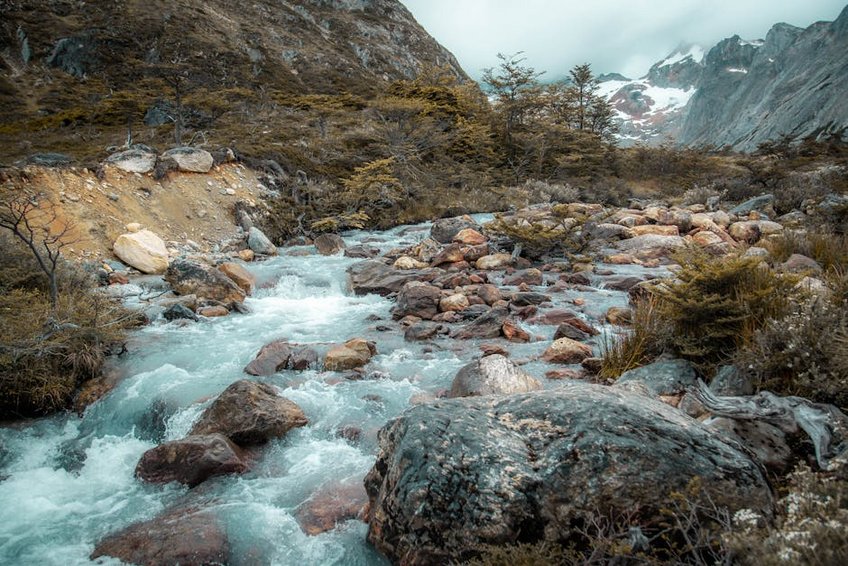Argentina Ushuaia End of the World: Your Ultimate Adventure Guide
Standing at the southern tip of South America, Argentina Ushuaia End of the World offers an unparalleled sense of adventure that captures the imagination of travelers worldwide. As the world’s southernmost city, Ushuaia serves as the gateway to Antarctica and the rugged landscapes of Tierra del Fuego, where snow-capped mountains meet the Beagle Channel in a dramatic display of nature’s power. You’ll discover a destination where penguins waddle along shorelines, glaciers creak with ancient ice, and hiking trails lead to viewpoints that feel like the edge of the planet. The Argentina Ushuaia End of the World experience combines raw wilderness with charming urban comforts, creating a unique travel proposition that appeals to adventurers, nature lovers, and culture seekers alike. Whether you’re embarking on a cruise to the white continent or exploring the national parks, this remote city promises memories that will last a lifetime while challenging your perception of what’s possible in travel.
Argentina Ushuaia End of the World – Essential Information
Understanding the fundamentals of Argentina Ushuaia End of the World will help you appreciate why this destination stands apart from typical travel experiences. Located in the Tierra del Fuego archipelago, Ushuaia functions as the capital of Argentina’s southernmost province and marks the official end of the Pan-American Highway. The city’s nickname “End of the World” comes from its geographical position at 54°48′ south latitude, making it the closest urban center to Antarctica. You’ll find a fascinating history here, from its origins as a penal colony to its current status as a hub for scientific research and adventure tourism. The combination of subpolar oceanic climate, stunning natural surroundings, and unique cultural heritage creates an environment where every day brings new discoveries and challenges.
What Makes Ushuaia Special – Key Characteristics
- Geographical uniqueness as the world’s southernmost city with authentic “end of the world” credentials verified by geographical societies and travel authorities
- Dramatic landscape transitions where the Andes mountains plunge directly into ocean channels, creating breathtaking scenery unlike anywhere else on Earth
- Gateway status to Antarctica with numerous expedition cruises departing from its port, offering once-in-a-lifetime polar adventures
- Budget traveler option: Hostels from $25-40/night, self-catering meals, public transportation, and free hiking activities can keep daily costs around $60-80 USD
- Mid-range experience: Comfortable hotels at $80-150/night, restaurant meals, guided tours, and domestic flights from Buenos Aires bring daily expenses to $150-250 USD
- Luxury exploration: Premium hotels starting at $200/night, fine dining, private guides, Antarctica cruise add-ons, and special experiences elevate costs to $300-500+ USD daily
- Official Argentina Tourism Board
- Lonely Planet Ushuaia Travel Guide
Historical Context and Development
The story of Argentina Ushuaia End of the World began with indigenous Yámana people who inhabited these lands for thousands of years before European arrival. Modern Ushuaia developed around a penal colony established in the late 19th century, with prisoners building much of the early infrastructure. This penal history adds layers of intrigue to your visit, with the former prison now housing museums that detail the region’s past. The city’s transformation into a tourism destination accelerated in the late 20th century as adventure travelers discovered its unique positioning and natural wonders. Today, you’ll find a vibrant community of approximately 60,000 residents who have adapted to the challenging climate while preserving the authentic character that makes Ushuaia so compelling.
Argentina Ushuaia End of the World – Planning Your Trip
Careful planning transforms your Argentina Ushuaia End of the World adventure from a dream into a smoothly executed reality. The remote location demands more preparation than typical destinations, with considerations for weather extremes, limited transportation options, and seasonal variations in accessibility. You’ll need to think about clothing layers that can handle everything from sunny days to snowstorms within hours, booking accommodations well in advance during peak seasons, and understanding the logistics of reaching this southern outpost. Smart planning also involves budgeting for higher costs due to the remote location while identifying value opportunities that make the experience accessible to different travel styles. With proper preparation, you’ll maximize your time exploring rather than troubleshooting logistical challenges.
Best Time to Visit Argentina Ushuaia End of the World
Choosing when to experience Argentina Ushuaia End of the World depends entirely on your preferred activities and weather tolerance. Summer months from December to February offer the mildest conditions with temperatures ranging from 5°C to 15°C (41°F to 59°F), longer daylight hours exceeding 17 hours, and optimal conditions for hiking, wildlife watching, and cruising. This peak season brings more tourists and higher prices but guarantees the most accessibility to outdoor attractions. Shoulder seasons in spring (September-November) and autumn (March-May) provide fewer crowds, lower costs, and dramatic seasonal transitions with stunning foliage colors or emerging wildflowers. Winter visits from June to August cater to ski enthusiasts and those seeking the magical atmosphere of snow-covered landscapes, though some attractions may have limited access.
Budget Planning and Costs for Your Adventure
Essential Preparation Checklist
Preparing thoroughly for your Argentina Ushuaia End of the World journey ensures you can focus on the experience rather than logistical headaches. Begin with documentation, ensuring your passport has at least six months validity and checking visa requirements based on your nationality—most Western passport holders receive a 90-day tourist visa upon arrival. Pack strategically with layered clothing including thermal base layers, waterproof outer shells, sturdy hiking boots, and accessories like gloves and hats regardless of season. Make advance bookings for accommodations and popular tours like Tierra del Fuego National Park or Beagle Channel cruises, especially during peak months. Finally, arrange comprehensive travel insurance that covers adventure activities and potential weather-related cancellations, which are common in this region known for rapidly changing conditions.

Argentina Ushuaia End of the World – Top Attractions and Activities
Exploring the diverse attractions around Argentina Ushuaia End of the World reveals why this destination captivates travelers seeking authentic adventure. The combination of pristine national parks, unique wildlife encounters, and historical sites creates an itinerary that balances education with exhilaration. You’ll find yourself marveling at glaciers that predate human civilization, observing penguin colonies in their natural habitat, and standing at literal endpoints of continental road systems. The activities available cater to various fitness levels and interests, from gentle boat tours suitable for families to challenging multi-day treks for experienced hikers. Every experience carries the special atmosphere of being at the world’s edge, with the constant awareness that beyond lies only ocean and the frozen continent of Antarctica.
Must-See Highlights in Ushuaia
Tierra del Fuego National Park represents the crown jewel of Argentina Ushuaia End of the World attractions, protecting 630 square kilometers of mountains, forests, and coastline at the continent’s southern tip. You can explore well-marked trails like Senda Costera that winds along the Beagle Channel, visit Lapataia Bay where the Pan-American Highway officially ends, and observe diverse birdlife in their natural habitat. The End of the World Train offers a historical journey through the park following the original prisoner transport route, providing both transportation and cultural context. Meanwhile, the Martial Glacier overlooking the city delivers panoramic views after a chairlift ride and short hike, while the Les Eclaireurs Lighthouse—often mistakenly called the “Lighthouse at the End of the World”—stands as an iconic symbol of maritime navigation in these treacherous waters.
Hidden Gems and Local Favorites
Venturing beyond the main tourist trail in Argentina Ushuaia End of the World reveals special experiences that many visitors overlook. The Acatushun Museum provides fascinating insights into marine mammal research with skeletons of dolphins, whales, and seals collected from local beaches. Laguna Esmeralda offers a moderately challenging hike through peat bogs and beaver-dammed streams to a stunning emerald-colored lake surrounded by mountains. For a truly local experience, visit the craft market at the old prison where artisans sell handmade woolens and wooden crafts, or take a day trip to Estancia Harberton, the region’s first estancia founded by missionary Thomas Bridges in 1886. These lesser-known spots provide authentic connections to the region’s culture and natural history without the crowds of more famous attractions.
Argentina Ushuaia End of the World – Practical Travel Information
Navigating the practical aspects of visiting Argentina Ushuaia End of the World requires understanding the unique logistics of this remote destination. Transportation options include flying into Malvinas Argentinas International Airport from Buenos Aires or other Argentine cities, with flight times averaging three hours from the capital. Once in Ushuaia, you’ll find a compact city center easily explored on foot, while taxis, rental cars, and local buses service further attractions. Accommodation ranges from hostels to luxury hotels, with many properties offering stunning views of the Beagle Channel. The local currency is the Argentine peso, though US dollars are often accepted, and credit cards work at most established businesses. Internet connectivity remains reliable in urban areas but becomes spotty in remote regions of the national parks.
| Accommodation Type | Features and Location | Price Range (USD per night) |
|---|---|---|
| Budget Hostels | Shared facilities, central locations, social atmosphere | $25-50 |
| Mid-Range Hotels | Private bathrooms, breakfast included, city views | $80-150 |
| Luxury Properties | Waterfront locations, spa facilities, fine dining | $200-400+ |


